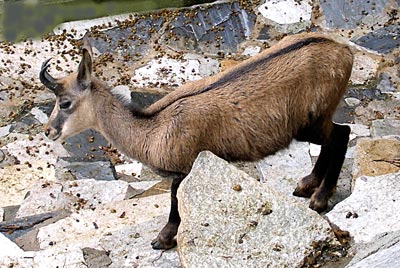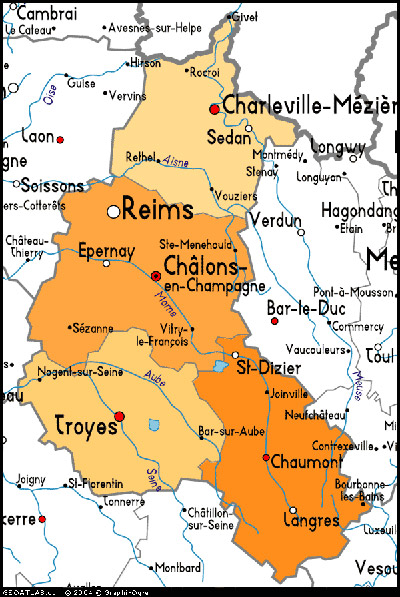
A mountain antelope which is found in the Alps and Pyrénées, although it is increasingly uncommon. In the Pyrénées it is called the isard.
An Alpine goat which is brown or bay - characteristic markings are black face, dorsal stripe, feet and legs and sometimes a martingale running over the withers and down to the chest. Spelling for male is chamoise.
Champagne is the best known sparkling wine in the world. Only sparkling wines produced using the méthode champenoise and from this region are permitted to call themselves Champagne, a right for which Champagne has fought long and hard. Similar wines from elsewhere may call themselves vin mousseux and can state they have used the méthode champenoise. However, despite this, in the United States ‘champagne’ may describe any sparkling white wine. Champagne is usually dry. It is made from a combination of red and white grapes, Pinot Noir, Pinot Meunier and Chardonnay. However, the juice lies on the skins for such a short time that no pigment is extracted and the wine remains white. If a Champagne is described as ‘blanc de blancs’ it will be made only from white grapes. Crémant describes a creamier Champagne with less sparkle. The wine-producing regions are in Montagne de Reims, Côte de Blancs and Vallée de la Marne.

Champagne is a region former province in the north east of France, now forming the departments of Marne, Ardennes, Aube and Haute-Marne. To th east there is dairy farming, while th north is famous for the regions of the Montagne de Reims, Côte de Blancs and Vallée de la Marne, producing the most well known sparkling wine in the world. The region also produces pork products such as pâtés and andouillettes, gougères, cheese, pears and game.